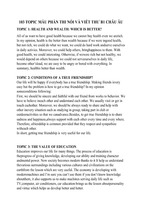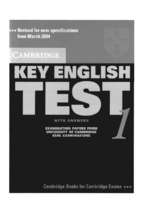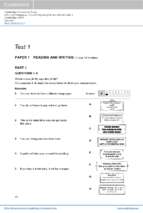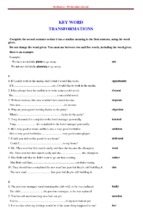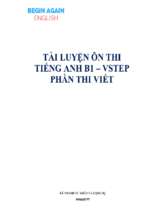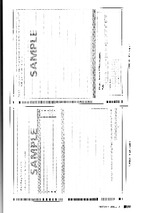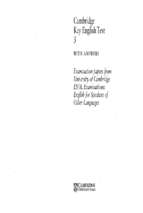VIETNAM NATIONAL UNIVERSITY, HANOI
VIETNAM JAPAN UNIVERSITY
---------***--------
NGUYEN HUU CUONG
A STUDY ON CUSTOMER BEHAVIORS IN
CHAIN COFFEE SHOPS IN VIETNAM
MASTER'S THESIS
Hanoi, 2020
VIETNAM NATIONAL UNIVERSITY, HANOI
VIETNAM JAPAN UNIVERSITY
---------***--------
NGUYEN HUU CUONG
A STUDY ON CUSTOMER BEHAVIORS IN
CHAIN COFFEE SHOPS IN VIETNAM
MAJOR: BUSINESS ADMINISTRATION
CODE: 8340101.01
RESEARCH SUPERVISORS:
Prof. Dr. PEIJUN GUO
Associate Prof. Dr. NGUYEN VIET KHOI
Ha Noi, 2020
ABSTRACT
This research aims to investigate and understand the relationship between
price, customer-based brand equity, customer satisfaction, and brand loyalty in the
Vietnam’s chain coffee shops. The chain coffee shops are earning big money and
growing fast in Vietnam so that it is necessary to appreciate the importance of
customer behaviors to manage this type of business. To do that, we set brand loyalty
and customer satisfaction as dependent variables and set price, congruence, and
quality as independent variables then describe the difference of those relationships in
two empirical cases in Hanoi and Ho Chi Minh City.
We use the quantitative approach on a sample of 427 respondents in Highlands
Coffee and The Coffee House, which are two major Vietnamese coffee shop brands.
We utilize the structural equation modeling (SEM) method by SPSS software.
Descriptive analyses and path analyses of the multivariate regression model support
the validity of the proposed model.
The findings in this study are that significant positive effects from price,
quality, and congruence on customer satisfaction and satisfaction on brand loyalty in
Hanoi and Ho Chi Minh City chain coffee shops. The analyses also indicate that
among three antecedents of customer satisfaction, quality has the most substantial
influence, follow by congruence and price. Moreover, the analyses tell that in Ho Chi
Minh City, customer satisfaction has much higher impact on brand loyalty than in
Hanoi. Several implications might be withdrawn to coffee shop brands as a
consequence of these results.
Keywords: Price; Food and Service Quality; Customer Satisfaction; Brand Loyalty;
Martketing; Branding; Chain Coffee Shop; Vietnam
ACKNOWLEDGMENT
After two years of studying and researching at Vietnam Japan University, it is
my privilege to be able to write this dissertation. From the first interview session for
university entrance, I have been keeping the research orientation on the subject, which
I am interested in, customer behavior in the coffee shops industry. The study included
not only academic but also practical aspects with implications for understanding the
customer. The subjects and knowledge I gained through coursework sessions also
play an essential role in supporting my research activities. I hope that my research
can contribute to researches on the customer behavior in the coffee shop industry.
First of all, I would like express my gratitude to my advisors, Professor Peijun
Guo and Professor Nguyen Viet Khoi, for their guidance and comments. Especially
the time when I was in Yokohama, Japan, my advisors gave me valuable advice about
how I should proceed with the researching process. Without their prompt and patient
instructions, I cannot finish the thesis. I want to say thanks to all of my friends,
respondents of the questionnaires for their support and encouragement. Finally,
thanks to my family for emotional and financial support that motivate me for making
effort to complete the research. Remarkably, thanks to my mother, despite her leg
injury recovering period, she has always encouraged and supported me so that I can
focus on the study.
TABLE OF CONTENTS
ABSTRACT
ACKNOWLEDGMENT
LIST OF ABBREVIATIONS
LIST OF TABLES
LIST OF FIGURES
CHAPTER 1: INTRODUCTION ............................................................................1
1.1 Background of the research ............................................................................1
1.2 Problem statement ...........................................................................................5
1.3 Research objectives ..........................................................................................6
1.4 Scope of the research .......................................................................................6
1.5 Significance of the research ............................................................................7
1.6 Thesis structure ................................................................................................7
CHAPTER 2: LITERATURE REVIEW ................................................................8
2.1 Brand equity .....................................................................................................8
2.2 Customer satisfaction ....................................................................................10
2.3 Brand loyalty ..................................................................................................10
2.4 Price.................................................................................................................11
2.5 Relationship between brand equity, price, customer satisfaction and
brand loyalty ........................................................................................................12
2.5.1 Brand equity and customer satisfaction ..................................................12
2.5.2 Price and customer satisfaction ...............................................................14
2.5.3 Customer satisfaction and brand loyalty .................................................15
2.6 Research model ..............................................................................................17
CHAPTER 3: METHODOLOGY .........................................................................19
3.1 Research design ..............................................................................................19
3.2 Data collection instruments ..........................................................................20
3.3 Data analysis ...................................................................................................22
CHAPTER 4: FINDINGS ......................................................................................23
4.1 General results ...............................................................................................23
4.1.1 Demographic information ........................................................................23
4.1.2 Demographic customer behavior .............................................................23
4.2 Descriptive analysis .......................................................................................25
4.3 Analytical results ...........................................................................................27
4.3.1 Statistical results in Hanoi .......................................................................27
4.3.2 Statistical results in Ho Chi Minh City....................................................31
CHAPTER 5: DISCUSSION AND CONCLUSION............................................38
5.1 Discussion .......................................................................................................38
5.2 Practical implications ....................................................................................39
5.3 Limitations and future research recommendations ...................................41
REFERENCES ........................................................................................................43
APPENDIX ..............................................................................................................50
LIST OF ABBREVIATIONS
ASV
Average Shared Variance”
AVE
“Average Variance Extracted
CBBE
Customer-Based Brand Equity
CFA
Confirmatory Factor Analysis”
CFI
“Comparative Fit Index
CR
Composite Reliability
DF
Degrees of Freedom
EFA
Exploratory Factor Analysis
GFI
Goodness of Fit Index
HCM
Ho Chi Minh
KMO
Kaiser-Meyer-Olkin
MSV
Maximum Shared Variance
RMSEA
Root Mean Square Error of Approximation”
SEM
“Strutural Equation Modeling
TCH
The Coffee House
TLI
Tucker-Lewis Index
LIST OF TABLES
Table 1.1. Leading coffee shops brand in Vietnam in 2019 ......................................3
Table 3.1. Questionnaire scale and construct...........................................................21
Table 4.1. Profile of respondents…………………………………………………..23
Table 4.2. Demographic customer behavior ............................................................24
Table 4.3. Descriptive analysis .................................................................................26
Table 4.4. Reliability test in Hanoi ...........................................................................27
Table 4.5. KMO and Bartlett's Test in Hanoi ...........................................................28
Table 4.6. Pattern Matrix in Hanoi ...........................................................................28
Table 4.7. Results of GOF tests of CFA factor analysis in Hanoi ...........................29
Table 4.8. Convergent and discriminant validity in Hanoi ......................................30
Table 4.9. Results of SEM analysis in Hanoi ...........................................................31
Table 4.10. Reliability test in HCM City .................................................................31
Table 4.11. Pattern Matrix in HCM City..................................................................32
Table 4.12. KMO and Bartlett's Test in HCM City .................................................33
Table 4.13. Results of GOF tests of CFA factor analysis in HCM City ..................33
Table 4.14. Convergent and discriminant validity in HCM City .............................34
Table 4.15. Results of SEM analysis in HCM City..................................................36
LIST OF FIGURES
Figure 1.1. Total domestic coffee consumption in Vietnam from 2010 to 2018 .......2
Figure 2.1. Research model………………………………………………… …….17
Figure 4.1. CFA path analysis in Hanoi ................................................................29
Figure 4.2. SEM path analysis in Hanoi ..................................................................30
Figure 4.3. CFA path analysis in HCM City ............................................................34
Figure 4.4. SEM path analysis in HCM City ...........................................................35
CHAPTER 1: INTRODUCTION
1.1 Background of the research
As a developing country, Vietnam has a massive capacity of agricultural land
accounts for 39% in the total area with the contribution to GDP at 15% in 2017
(Statista, 2020). The report by Statista also indicated that the primary labor force of
Vietnam is in the agriculture sector, with 40% of employment amounted to
approximately 20 million people in 2018. In this sector, the coffee industry is vital
for both domestic and foreign markets as Vietnam has been maintaining the position
as the world’s second-largest coffee exporter in consecutive years.
In the early twentieth century, coffee was first introduced into Vietnam in the
time of colonization by France, coffee production then increased rapidly and became
one of the most crucial agricultural products. The first instant coffee plant with a
manufacturing capacity of 80 tons per year, was established in Dong Nai Province,
in 1969. The two main kinds of coffee beans in Vietnam are Robusta and Arabica,
containing 1.6 to 2.7% caffeine and 1 to 1.5% caffeine, respectively, making the taste
of coffee here bitter and healthier than the coffee drinks in the world.
According to Tran (2019), in the marketing year of 2018/2019, domestic
consumption of coffee is at 3 million bags, and the experts forecast this number will
drastically increase due to the fierce competition of both international and local coffee
brands in Vietnam. The domestic consumption of coffee casts for approximately 10%
of total coffee production, much lower than the exported amount of coffee, which
means the local coffee shops still can grow. From
Table 1.1, we know the upward
trend in consuming coffee of Vietnamese consumers from 2010 to 2018, and this
upward trend signifies the continuing increase in domestic coffee consumption in the
future.
1
3,000
2,500
2,000
1,500
1,000
500
0
2010
2011
2012
2013
2014
2015
2016
2017
2018
Figure 1.1. Total domestic coffee consumption in Vietnam from 2010 to 2018
(Unit: 1000 sixty-kg bags) (Source: statista.com)
There are many newly-built coffee chains in recent years in Vietnam.
According to Le (2018), coffee chains have competitive advantages in quickly
detecting target customers and creating a standardized management system. Also,
coffee chains have more competency in attracting consumers when they become
professional brands. Additionally, it is difficult to have a precise number of coffee
shops in Vietnam for the fact that the independent coffee shops locate sparsely and
have a short life cycle. However, the coffee chains have been the trend for business
in coffee shops in Vietnam, along with the evolution of e-commerce and delivery
service. There are leading brands in the coffee chain market in Vietnam that prevails
in the number of stores and revenue, namely Highland Coffee, Starbucks, The Coffee
House, and Trung Nguyen Coffee.
American giant coffee shops brand Starbucks, which entered Vietnam in 2013,
now runs 60 shops, mostly in Hanoi and HCM City. However, Starbucks offers a
higher price than local chains like The Coffee House or Highland though they are in
the same premium segment. Domestic coffee chains in Vietnam manage a wide
variety of products, from drinks to foods as well as secure Wi-Fi connection and
tranquil space, especially sensitive in market trends and taste of the customer.
Nowadays, fast-pace economic development in Vietnam encourages
competition in various business and service sectors. Many big firms try to invest
substantial financial sources to gain market share and revenue despite losing profit,
especially in creating chain businesses. Other than the growth of convenient store
2
markets, supermarkets, and food chains, the coffee chain market is among the fastestgrowing sector in terms of the number of stores and revenue.
In 2019, Euromonitor evaluated Vietnam’s chain coffee shop industry has a
business volume at above one billion US$ for the improvement in living standards
and urbanization. This data shows that the coffee chain sector is essential. In
comparison, according to Statista, the revenue in the hot drinks market in Vietnam
amounts to 8.817 billion US$ in 2020. In this hot drinks market, the most prominent
industry is coffee, which has a business volume of 5.682 billion US$. According to a
report by BMI Research, Vietnam’s coffee consumption increased remarkably from
0.42 kilograms per person per year in 2005 to 1.39 kilograms per person per year in
2015. Therefore, domestic coffee chains play a crucial part in the coffee market.
However, Euromonitor also reported in 2019 that the five leading brands in
the coffee chain market account for 15.3% of market share, with Highlands holding
7.2%. Among the leading chains, Highlands Coffee, The Coffee House, and
Starbucks are the biggest in earning revenue. Table 1.1 shows the revenue and
number of stores from leading coffee shop brands in Vietnam in 2019.
Table 1.1. Leading coffee shops brand in Vietnam in 2019
Revenue
Highlands Coffee
The Coffee House
Starbucks
1628
669
593
240
138
49
(Unit: billion dong)
Number of stores
(Source: VIRAC)
Highlands Coffee and The Coffee House are brands that originated from
Vietnam, while Starbucks is a foreign competitor. However, Highlands and The
Coffee House consider their targeted customer is the middle class with a pricing
segment of 30000 to 60000 VND. This study then chooses these two Vietnamese
brands to be objects for collecting empirical data. The conclusions from the research
might be useful findings for Vietnamese brands, especially Highlands Coffee and The
Coffee House, to understand the behavior of their customers.
Besides, the phenomenon to research on the coffee chain market is the scenario
approach. There is a big difference between the number of stores between the two
cities of Vietnam, Hanoi and HCM City. Currently, the Coffee House has 32 stores
3
in Hanoi and 88 in HCM City. Also, Highlands Coffee maintains 81 and 111 stores
in Hanoi and HCM correspondingly. This data incurs curiosity if there is a difference
in customer behavior between two cities.
Highlands Coffee is the number one coffee chain in Vietnam. The founder of
Highlands, CEO David Thai, started the business in 1998 and opened the first store
in 2002, but it gained much brand awareness and investment after 2012. From that
time, Highlands continually expands its business, from 50 stores in 2012 to 300 stores
in 2019. The strengths of Highlands are its attractive location in bustling districts,
comfortable space, and high-quality products. Moreover, Highlands has the ambition
to bring Vietnamese coffee to the global; recently, they opened their first outlet in the
Philippines. As a leading coffee shop in Vietnam in a long time, Highlands has
continuously been improving brand awareness and quality, especially on the delivery
system or corporate social responsibility campaign. Moreover, Highlands is prevalent
not only on in-shop foods and drinks but also on roasted&ground coffee, instant
coffee, and ready-to-drink coffee, which are its signature products. Highlands
connects with food reviewing website Now.vn or Foody.vn for delivery service in
addition to traditional telephone booking or its website.
The Coffee House (TCH) is a young and unique brand starting from 2014,
currently holds second place in the Vietnamese market of the coffee chain. CEO
Nguyen Hai Ninh shared three strengths of TCH for attracting customers are the
socializing space, staff behavior, and convenience. TCH also identified that its
strategic competitor is Highlands Coffee in the same segment. TCH is also
continuously adapting its menus with the current trend, and especially, they had the
acquisition with the Ten Ren brand to compete with milk tea shops. Gradually, TCH
sets up the foundation for long-term growth from the raw materials to customer
service. Besides, TCH also serves the customer with roasted coffee beans or
subscription combos in diversifying menus. They concentrate much on convenient
delivery service experience, especially on developing the TCH app on smartphones,
even on Momo, an e-wallet app that generates many users in Vietnam recently.
People are coming to coffee shops these days for a variety of purposes, not
only for having a drink but a place to gather, socialize with friends and acquaintances.
Therefore, it is necessary to study the significance of customer satisfaction and
4
loyalty. Both Highlands Coffee and TCH share the same idea about the difference in
the Hanoi and HCM market in Vietnam. Despite success in HCM City, many coffee
shop brands are skeptical about expanding business in Hanoi. CEO of TCH
appreciated that customers in Hanoi prefer the attractive open space. However, not
many brands can provide though the potential of doing business in this city is very
high. Therefore, this research hopes to study customer behavior in Hanoi and HCM
City and contribute findings to the coffee shop brands.
1.2 Problem statement
From academic perspectives, brand equity, customer satisfaction, and brand
loyalty are vital for promoting sustainable development to the companies. A satisfied
and loyal customer does not only repeat their purchasing behavior but also but
showing a willingness to spend extra money on their favored brand (Hoyer and
MacInnis, 2008). Nowadays, loyalty also transforms into sharing positive comments
on the brand, referring the brand to networks and family members. These advantages
from customer behavior bring word-of-mouth effect and brand image, which
contribute to the sustainable growth of a brand.
For service industry as coffee chains in Vietnam, the price is high in relation
to the customer expenditure. Therefore, it is vital to focus on CBBE and brand loyalty
while the demand is still growing. Coffee shops nowadays is a premium service which
customer are willing to pay big money and become a regular customer. Given the
example of fast-food chains in Vietnam like the KFC or Golden Gate, despite
charging a much higher price than a local restaurant, they still have a large number
of patronages. However, food chains or coffee chains face many difficulties in
competing with competitors. Thus, it is of great value for them to focus on educating
loyal customers and gaining customer satisfaction, which helps to keep customer stay.
Keller (1993) conceptualized the model of CBBE, and Nam et al. (2011)
i
i
i
i
i
i
i
i
i
i
i
i
employed this concept to study the effect of brand equity on customer satisfaction
i
i
i
i
i
i
i
i
i
i
i
i
i
and brand loyalty from empirical data in the UK. Besides, Tu et al. (2012) also
i
i
i
i
i
i
i
i
i
i
i
i
i
i
researched on satisfaction and loyalty of customers in Starbucks Coffee in Taiwan
i
i
i
i
i
i
i
i
i
i
i
by structural equation modeling (SEM) method. However, there is no or little
i
i
i
i
i
i
i
i
i
i
i
research to investigate the relationship between brand equity, price, customer
i
i
i
i
i
i
i
i
i
satisfaction, and brand loyalty in the Vietnamese market. With the existing
i
i
i
i
i
i
i
5
i
i
i
i
i
i
i
i
literature in the field of Vietnam coffee chains, this research aims to help in
i
i
i
i
i
i
i
i
i
i
i
i
i
understanding the customer behavior of Vietnamese customers by making an
i
i
i
i
i
i
i
i
i
investigation on factors affecting brand loyalty. In a more common sense, it will
i
i
i
i
i
i
i
i
i
i
i
i
help to learn whether Western models of brand equity, customer satisfaction, and
i
i
i
i
i
i
i
i
i
i
i
loyalty are significant for explaining the Vietnamese customer behavior toward
i
brands.
i
i
i
i
i
i
i
i
i
i
i
i
i
i
i
i
i
i
i
i
i
The theoretical contribution of this research is that: the researcher adds a new
i
i
i
i
i
i
i
i
i
i
i
i
i
factor price on the existing model to investigate the impact of price on customer
i
i
i
i
i
i
i
i
i
i
i
i
i
satisfaction. We examine how the price contributes to customer satisfaction, brand
i
i
i
loyalty, and brand equity.
i
i
i
i
i
i
i
i
i
i
i
i
i
i
i
i
i
i
i
i
i
i
management in chain coffee shops, especially spotting the difference in customer
i
i
i
i
The practical contribution of this research is that we bring insights for brand
i
i
i
i
i
i
i
i
i
i
i
i
behavior in two scenarios. It is also helpful for the person aiming to set up a coffee
i
i
i
i
i
i
i
i
i
i
i
i
i
i
i
i
shop in Vietnam in the future because of the vital role of investigating customer
i
i
i
i
i
i
i
i
i
i
i
i
i
i
i
behavior, namely customer satisfaction and loyalty.
i
i
i
i
i
This paper offers an understanding of the importance of factors affecting brand
loyalty and customer satisfaction from an empirical study in Vietnam. Future research
can further test with more factors or in other markets in Vietnam to gain knowledge
about customer behavior.
1.3 Research objectives
This study has three objectives as follows:
i
i
i
i
i
i
i
To investigate the effect of price, congruence and quality on customer
i
i
i
i
i
i
i
i
i
i
i
satisfaction in chain coffee shops in Vietnam
i
i
i
i
i
i
i
To investigate the effect of customer satisfaction on brand loyalty in chain
i
i
i
i
i
i
i
i
i
i
i
i
coffee shops in Vietnam
i
i
i
i
i
To describe the customer behavior from analysis results in two scenarios of
i
i
i
i
i
i
i
i
i
i
i
i
coffee chains in Hanoi and HCM City
i
i
i
i
i
i
1.4 Scope of the research
This study focuses on three objectives, as mentioned above. Therefore, the
research samples concentrated on the customer of Highlands Coffee and The Coffee
House in Hanoi and HCM City. The quantitative questionnaire was employed to
study the phenomenon and examine the hypotheses stated in the next chapter.
6
1.5 Significance of the research
This research aims to examine the relationship between price, CBBE, and
customer satisfaction in the coffee chain sector in Vietnam. The data collection tool
is questionnaire surveys with a sample of 400 respondents in two coffee chains in
Hanoi and HCM City. This quantitative approach enables this research to analyze the
data across the sample and test the theories.
The chain coffee shops sector is imperative and contributes to the growth of
the coffee industry or service industry simultaneously. This study then provides new
data that can support brands to understand customer preferences. It also recommends
implications on branding which benefit coffee chains as well as other markets in
Vietnam.
From the literature reviews, the researcher found little or no academic paper
directly studies the effect of price, congruence, quality on customer satisfaction, and
brand loyalty in the case of Vietnamese coffee chains. Because of this scarcity in
research about the customer of coffee shops in Vietnam, scholars should also consider
this research useful and information regarding the measurement of variables. The
results of this paper reveal knowledge about Vietnamese customer behavior in this
market, and they are also useful to future research orientation in a related market.
1.6 Thesis structure
This paper consists of five chapters starting with the chapter of the research
background to overview and centralize the scope of the research. In chapter 2, the literature
reviews are given to describe the theoretical relevance of previous researches and to
develop the model as well as hypotheses for further examination. In chapter 3, we show
the methodology, data collection, and data analyzing technique. The fourth chapter shows
the findings of the research, which represent descriptive analyse and analytical results. In
the final chapter, we discuss the results, make conclusions about the research, answer the
research objectives correspondingly, recommendations to subjects, and future researches.
7
CHAPTER 2: LITERATURE REVIEW
2.1 Brand equity
Brand equity, from the 1980s, has become one of the essential concepts of
i
i
i
i
i
i
i
i
i
i
i
i
marketing and branding, has been described and researched in various ways.
i
i
i
i
i
i
i
i
i
i
i
Previous studies discussed the idea of brand equity in three primary prospects,
i
i
i
i
i
i
i
i
i
i
i
including a customer-based perspective (Aaker, 1991), financial perspective (Simon
i
i
i
i
i
i
i
i
and Sullivan, 1993) and the combined view of these two (Anderson, 2007).
i
i
i
i
i
i
i
i
i
i
i
i
i
i
i
According to Aaker (1991), brand equity refers to the array of different liabilities and
i
i
i
i
i
i
i
i
i
i
i
i
i
i
brand assets, associated with the brand for instance including symbol, name, and
i
i
i
i
i
i
i
i
i
i
i
i
others, adding and subtracting from the value provided by services and products to
i
i
i
i
i
i
i
i
i
i
i
i
i
the firm as well as to firm’s consumers and customers.
i
i
i
i
i
i
i
i
i
Correspondingly, Keller (1993) defined CBBE as the differential effect of
i
i
i
i
i
i
i
i
i
brand knowledge upon consumer response to the marketing of the brand. Therefore,
i
i
i
i
i
i
i
i
i
i
i
i
this perspective relates to three critical concepts, including brand knowledge,
i
i
i
i
i
i
i
i
i
i
differential impact, and consumer response to marketing. Brand knowledge
i
i
i
i
i
i
i
i
i
i
designates the combination of brand image and brand awareness and its ideas in
i
i
i
i
i
i
i
i
i
i
i
i
i
consonance with the relationships and characteristics of brand association depicted
i
i
i
i
i
i
i
i
i
i
earlier.
Likewise, comparing customer response to the marketing of a brand with the
i
i
i
i
i
i
i
i
i
i
i
i
reaction to similar marketing from a fictitiously named or an unnamed version of the
i
i
i
i
i
i
i
i
i
i
i
i
i
i
product or service decides the differential effect of brand equity. The definition of
i
i
i
i
i
i
i
i
i
i
i
i
i
customer response to marketing is following customer perceptions, preferences, and
i
i
i
i
i
i
i
i
i
i
behavior arising from marketing-mix activities; for example, it involves reactions to
i
i
i
i
i
i
i
i
i
i
i
coupon promotions, perception of copy points from an ad, or evaluations of a
i
i
i
i
i
i
i
i
i
i
i
i
i
proposed brand extension and others.
i
i
i
i
On the other hand, brand equity is the enhancement in perceived utility and
i
i
i
i
i
i
i
i
i
i
i
i
desirability that a brand name confers in products or services (Lassar, Mittal, and
i
i
i
i
i
i
i
i
i
i
i
i
i
i
Sharma, 1995). Besides, Christodoulides (2010) represents brand equity as a set of
i
i
i
i
i
i
i
i
i
i
i
attitudes, perceptions, behaviors, and knowledge on the part of consumers, resulting
i
i
i
i
i
i
i
i
i
i
i
in the enhanced utility of products and services, which facilitates the brands to
i
i
i
i
i
i
i
i
i
i
i
generate more significant revenues and margins than that, without the brand.
i
i
i
i
i
i
8
i
i
i
i
i
i
i
Aaker (1991) offered the measurement of brand equity conforming to
i
i
i
i
i
i
i
i
i
i
different elements, aspects, and dimensions. The author relates the brand equity to
i
i
i
i
i
i
i
i
i
i
i
i
multiple issues, including brand association, brand awareness, perceived quality,
i
i
i
i
i
i
i
i
brand loyalty, and other proprietary assets of brands. From this part, CBBE is the
i
i
i
i
i
i
i
i
i
i
i
i
i
type of brand equity that the author wants to focus on and research in this study.
i
i
i
i
i
i
i
i
i
i
i
i
i
i
i
i
i
i
i
i
i
i
i
i
awareness, perceived quality, brand association, and brand loyalty, are fundamental
i
i
i
i
i
i
i
i
i
i
As explained by Washburn and Plank (2002), four concepts, including brand
i
i
i
i
i
dimensions to measure CBBE. The authors also noted that the perspective of other
i
i
i
i
i
i
i
i
i
i
i
i
i
proprietary assets of brands is irrelevant in consumer-based brand equity
i
i
i
i
i
i
i
i
i
i
measurement. Besides, Yoo and Donthu (2001) reported that consumer-based brand
i
i
i
i
i
i
i
i
i
i
equity at the individual level of customer breaks into behavioral and cognitive
i
i
i
i
i
i
i
i
i
i
i
perspectives; therefore, conducting consumer surveys is a valid measurement.
i
i
i
i
i
i
i
i
i
i
i
i
i
i
Additionally, consumer-based brand equity is the synthesis of physical
i
i
i
i
i
i
i
i
i
i
quality, staff behavior, brand identification, lifestyle-congruence, and ideal selfi
i
i
i
i
i
i
i
congruence (Nam et al., 2011). Consequently, this paper explores the impacts of
i
i
i
i
i
i
i
i
i
i
i
i
those characteristics of consumer-based brand equity on brand loyalty, in
i
i
i
i
i
i
i
i
i
i
consideration of customer satisfaction as a medium. Ko and Chiu (2006) viewed the
i
i
i
i
i
i
i
i
i
i
i
i
coffee shop industry as a part of the service industry, notably the food and service
i
i
i
i
i
i
i
i
i
i
i
i
i
i
i
industry, consequently, reflecting and reutilizing the items from the measurement of
i
i
i
i
i
i
i
i
i
i
i
i
CBBE in the study of Nam et al. (2011) is viable. Furthermore, O’Louhglin and
i
i
i
i
i
i
i
i
i
i
i
i
i
i
Szmigin (2006) portrayed that developing and designing the relationship of brand
i
i
i
i
i
i
i
i
i
i
association and five dimensions of consumer-based brand equity helped to meet
i
i
i
i
i
i
i
i
functional needs as well as the symbolic needs of customers.
i
i
i
i
i
i
i
i
i
i
i
i
i
i
Besides, for the resemblance in the research matter as an area of the service
i
i
i
i
i
i
i
i
i
i
i
i
i
industry, this study applies consumer-based brand equity by incorporating four
i
i
i
i
i
i
i
i
i
i
dimensions illustrated by Nam et al. (2011). The authors formulated a model with a
i
i
i
i
i
i
i
i
i
i
i
i
i
i
i
measurement of four dimensions of consumer-based brand equity with aiming to
i
i
i
i
i
i
i
i
i
i
i
research the case of hotels and restaurant industry in the UK. Thus, for similarity to
i
i
i
i
i
i
i
i
i
i
i
i
i
i
i
the case of hotels and restaurants industry, this paper employs the physical food and
i
i
i
i
i
i
i
i
i
i
i
i
i
i
service quality dimensions as well as the symbolic dimensions, including lifestylei
i
i
i
i
i
i
i
i
i
congruence, and ideal self-congruence, to measure consumer-based brand equity in
i
i
i
i
i
the coffee shops industry.
i
i
i
9
i
i
i
i
i
2.2 Customer satisfaction
Many types of research, especially in the marketing field, recognized
i
i
i
i
i
i
i
i
i
i
customer satisfaction as a critical factor for the long-term success of a brand (Pappu
i
i
i
i
i
i
i
i
i
i
i
i
i
and Quester, 2006). Accordingly, a large number of scholars employed customer
i
i
i
i
i
i
i
i
i
i
i
i
satisfaction as a dominant factor to explore the post-purchase behavior of the
i
i
i
i
i
i
i
i
i
i
i
i
customer, for example, attitudinal loyalty and behavioral loyalty. Nemati et al.
i
i
i
i
i
i
i
i
i
i
i
(2011) described customer satisfaction as the level a product or service serves the
i
i
i
i
i
i
customer and satisfies his or her expectations.
i
i
i
i
i
i
i
i
i
i
i
i
i
i
Customer satisfaction has both cognitive and affective aspects. The cognitive
i
i
i
i
i
i
i
i
i
i
aspects related to thoughts and judgments about the product or service and the brand
i
i
i
i
i
i
i
i
i
i
i
i
i
while the affective perspectives encompass a subjective feeling that the overall
i
i
i
i
i
i
i
i
i
i
experience in dealing with the firm is positive (Tu et al., 2012). Baig and Khan
i
i
i
i
i
i
i
i
i
i
i
i
i
i
i
i
i
(2010) believed that retaining customers is certainly worthwhile financially in
i
i
i
i
i
i
i
i
i
i
correlation to the cost of gaining new customers, which is far more expensive.
i
i
i
i
i
i
i
i
i
i
i
i
i
Consequently, customer satisfaction is a vital factor when doing business in such
i
i
i
i
i
i
i
i
i
i
i
i
profoundly competing markets, mainly the hotel and restaurant industry or coffee
i
i
i
i
i
i
i
i
i
i
i
shops industry.
i
Among two forms of customer satisfaction, including cumulative satisfaction
and transaction-specific satisfaction, researchers concentrate more to study related to
cumulative types, which refer to the extent of post-purchase satisfaction of the
customer. Tu et al. (2012) evaluated the overall satisfaction of the latest consumptions
of products and services along with the rendezvous with the brand or their employees.
2.3 Brand loyalty
Previous studies have defined and developed the concept of brand loyalty as
i
i
i
i
i
i
i
i
i
i
i
i
an important factor in branding and marketing. Brand loyalty is the repeated
i
i
i
i
i
i
i
i
i
i
i
i
purchasing products and services, as well as support the brands resulting from the
i
i
i
i
i
i
i
i
i
i
i
i
i
positive attitude towards the brand from customers (Hoyer and McInnis, 2008).
i
i
i
i
i
i
i
i
i
i
According to Jacoby and Chestnut (1978), brand loyalty refers to the perspective
i
i
i
i
i
i
i
i
i
i
i
i
i
which is biased behavioral response conveying over a period made by decisions of
i
i
i
i
i
i
i
i
i
i
i
i
consumers concerning the purchase of a particular brand or multiple brands, consider
i
i
i
i
i
i
i
i
i
i
i
as a process of psychological thinking of customers. The authors also highlighted the
i
i
i
i
i
i
i
i
i
i
i
i
i
i
importance of brand loyalty with the role of simplifying the purchasing decision, for
i
i
i
i
i
i
i
i
10
i
i
i
i
i
i
example, that with existed positive experiences with the brand, the customer tends to
i
i
i
i
i
i
i
i
i
i
i
i
i
keep buying as a signal of loyalty. Therefore, through brand loyalty concentration, a
i
i
i
i
i
i
i
i
i
i
i
i
firm or a brand can build up their regular customer or customer base, which is morale
i
i
i
i
i
i
i
i
i
i
for expanding business scale and growth.
i
i
i
i
i
i
i
i
i
i
i
i
i
i
i
i
Because brand loyalty is a psychological concept defined by many scholars, it
i
i
i
i
i
i
i
i
i
i
i
i
is difficult to measure it objectively. One method, including price sensitivity and
i
i
i
i
i
i
i
i
i
i
i
i
purchasing behaviors, is widespread and mentioned in various studies. Moreover,
i
i
i
i
i
i
i
i
i
i
brand loyalty is informatively measured by inspecting customers to assess their
i
i
i
i
i
i
i
i
i
i
commitment to the brand based on critical items such as the attitude toward the
i
i
i
i
i
i
i
i
i
i
i
i
i
product and their consistent opinions overtime (Mohammad, 2012). Previous studies
i
i
i
i
i
i
i
i
i
i
i
i
i
i
i
i
i
i
i
positive feeling or opinion on the brand itself or the products provided by the brand
i
i
i
i
i
i
i
i
i
i
i
i
i
i
(Gremler and Brown, 1996). There are multiple ways to measure attitudinal loyalty,
i
i
i
i
i
i
i
i
i
i
i
i
i
suggest two perspectives to view brand loyalty. Attitudinal loyalty attributes to the
i
i
i
i
i
for example: “intention of word of mouth” (Boulding et al., 1993) or “willingness to
i
i
i
i
i
i
i
i
i
i
i
i
i
i
pay a premium price” (Narayandas, 1996). On the other hand, behavioral loyalty
i
i
i
i
i
i
i
i
i
i
i
i
regards as the purchasing behavior or repeated the frequency of purchase products of
i
i
i
i
i
i
i
i
i
i
i
i
the same brand over time (Chaudhuri & Holbrook, 2001). Bandyopadhyay and
i
i
i
i
i
i
i
i
i
i
i
i
Martell (2007) considered the cause and effect relationship between attitudinal and
i
i
i
i
i
i
i
i
i
i
i
behavioral loyalty; for instance, if a customer holds a pleasant experience with the
i
i
i
i
i
i
i
i
i
i
i
i
i
brand, consequently, he or she favors becoming a repeated consumer.
i
i
i
i
i
i
i
i
i
Choi et al. (2011) developed a set of brand loyalty items that were useful for
further researches. This measurement of brand loyalty helped in mitigating the risk
of other factors affecting behavioral brand loyalty, such as convenience or habit.
Besides, Nam et al. (2011) also described a set of items to assess brand loyalty. This
research then employs items from previous papers to study the correlation between
brand loyalty and other variables.
2.4 Price
A price refers to the amount of payment or compensation given by one party
to another in exchange for one unit of goods or services (Schindler, 2012). Price is
also an element of marketing mix together with product, place, and promotion.
Besides, from the business viewpoint, marketing mix is a critical tool for firm and
organization to achieve marketing target as well as increase the sale and financial
11
performance (Bay, Petrizzi and Gill, 2008). In the service industry, the price has the
intangible nature of service, then in case other information is missing, price becomes
a pivotal quality degree (Olander, 1970; Zeithaml, 1981). Moreover, it is imperative
that the firm also confronts with setting price competitively, for example, a customer
considers price as a basis to choose the brand in situation among several competing
service organizations (Yelkur, 2000).
According to Olson (1977), the objective or actual price has been defined
distinctively from perceived price, and whether the price is low or expensive is
understood by the actual price by the customer. Moreover, Yoo et al. (2000)
represented that price is subjectively perceived by the consumer; it is possible to
measure it by collecting the opinion of the consumer. Using items of Smith and Park
(1992), the authors also developed eight items related to price measurement; for
instance, “the price of this brand is high.” This paper, therefore, will adapt and employ
this method of price assessment as a part of the scale for measuring the research
variable.
2.5 Relationship between brand equity, price, customer satisfaction and brand
loyalty
2.5.1 Brand equity and customer satisfaction
Service quality is a fundamental part of marketing and helps in sustaining and
i
i
i
i
i
i
i
i
i
i
i
i
i
succeed in business (Fitzsimmons et al., 2001). Previous studies already researched
i
i
i
i
i
i
i
i
i
i
i
service quality, and this paper utilizes two perspectives of service quality comprising
i
i
i
i
i
i
i
i
i
i
i
staff behavior and physical quality to investigate in the field of coffee shops industry.
i
i
i
i
i
i
i
i
i
i
i
i
i
i
i
The staff behavior reflects the competence, friendliness, and helpfulness of staff
i
i
i
i
i
i
i
i
i
i
i
members in the service industry, while the physical quality dimension refers to the
i
i
i
i
i
i
i
i
i
i
i
i
i
physical facilities of the brand (Bloemer and Kaspe, 1995).
i
i
i
i
i
i
i
i
The physical facilities accommodate firms to give the customer a pleasant
i
i
i
i
i
i
i
i
i
i
i
experience, which may incur not only repeated purchasing behavior but also wordi
i
i
i
i
i
i
i
i
i
i
of-mouth effect. Consequently, a good and pleasant experience also provokes
i
i
i
i
i
i
i
i
i
i
customers in terms of strongly affecting their level of satisfaction and loyalty
i
i
i
i
i
i
i
i
i
i
i
i
(Bloemer and Kaspe, 1995; Ryu and Jang, 2008).
i
i
i
i
i
i
i
On the other hand, the staff behavior has an impact on customer satisfaction
i
i
i
i
i
i
i
i
i
i
i
i
because during service providing process customer has a particular experience, it can
i
i
i
i
i
i
12
i
i
i
i
i
i
i
- Xem thêm -


